
A few weeks ago, when March Madness was infecting the American bloodstream, the mainstream media's oozy commentary coagulated around a common theme:
College basketball is just not that fun to watch.
Even major sports figures such as legendary UConn Huskies women's hoops coach
Geno Auriemma and Dallas Mavericks owner/Donald Trump-wannabe
Mark Cuban lambasted the game, the latter blustering that the "horrible" state of college roundball was hurting the NBA.
Horse hockey.
As I've argued
ad infinitum in these virtual pages, college basketball has swept past the "national pastime" of baseball in capturing the country's interest; and while football remains more popular, the gridiron's hegemony is threatened
from within by the growing concern about violence both on and off the field. And I would have expected that Mr. Shark Tank might have first checked out the financials before bleating that his league is better: While a respectable
18 million people watched the San Antonio Spurs clinch the NBA Finals last year, more than
28 million witnessed the final moments of 2015's Big Dance -- the highest ratings in 22 years -- and one can only imagine what those numbers would have been had... well... need I say more, Cats fans?
Of course, college basketball's ascendant popularity does not immunize it from critique. While I'm a huge fan of well-coached, team-oriented defensive play, too many games over the past several seasons have degenerated into low scoring, inside-the-paint wrestling matches. Indeed, college hoops could benefit from several tweaks to enliven the action, lift scoring totals, and make the game even more thrilling to watch.
Here are a few of my thoughts -- and let me know yours in the comments section below:
Shorten the Shot Clock
The 35 second shot clock, instituted in 1993, helped rescue the college sport from its doldrums, prompted most notoriously by UNC Coach Dean Smith's success with game-stalling measures such as the four-corner offense. (Helping make Smith the punchline of one of sport's funniest jokes: Who was the only man to hold Michael Jordan to 20 points a game?) But far too often in today's game -- especially in the most exciting late moments of a contest -- so many of those 35 seconds are eaten up by point guards milking the clock, and then by risk adverse decision making that deters exciting play such as executing pull-up jump shots or cleverly exploiting defensive gaps. Point in case: Andrew Harrison at the end of the Wisconsin game... well... need I say more, Cats fans?
Transitioning abruptly to the NBA's 24 second shot clock wouldn't be prudent -- with less talent than the pros, hurry up offenses would likely promote more unforced errors, turnovers and bad shots. But 30 seconds (as with this year's
NIT experiment) seems to be a fair compromise that would encourage less uncontested dribbling, and more real basketball action. And after an offensive rebound, let's reset the clock to only 20 seconds, reflecting that the ball's already in the front court.
Unclog the Lane
As I've
droned on previously, basketball games at their finest are relentless exhibitions of artistry in action -- colorful feats of intensely-rehearsed acrobatics, with the participants in near constant motion. Because the vertical plane is regularly pierced, basketball can provide rare, sublime moments of transcendental grace. That's why from an audience's sensory perspective, hoops has no peer in major sport.
However, today's defensive schemes too often clog up the lane and the area around the rim, slowing down the action with sumo-style grappling for position, incessant fouling (whether called or not), and worst of all, the elimination of angular movement and gravity-defying drives that make the sport so visually appealing and exciting.
Three reforms could go a long way toward unclogging the middle of the court and promoting the kind of hoops theater and music that brings crowds to their feet: (1) move the three point line back about two feet to international standards (22 feet, 17.5 inches around the arc, and 21 feet 8 inches at the corners) to bring defenses out from under the basket and discourage bad shooting; (2) expand the restricted lane from 3 to 4 feet to cut down on bruising collisions and inane wrestling matches; and (3) widen the lane by four feet to NBA standards, to spread out both offenses and defenses, and open the area around the basket for more future SportsCenter highlights.
Call Time Out on the Time Outs
Currently, there are up to 18 stoppages in every college game -- four TV timeouts per half, plus up to five timeouts per coach per game. Baseball has finally come around to understanding that unnecessarily lengthy games and constant delays are killing interest in the sport -- it's high time that the NCAA follow suit.
As a good capitalist, I understand that there's beer and wings and cars to sell. But I suggest that the NCAA cuts timeouts by a third, and hires some modern-day Mad Men to offer some creative revenue-generating solutions. Perhaps we can eliminate some of the "incisive commentary" that prolongs timeouts and fills up halftime, and instead offer supplemental corporate sponsorship opportunities. (One modest proposal: TBS could replace Chris Webber's blabbering with a highly lucrative product placement. Perhaps Sir Charles can barbecue with a Weber grill?)
Retain the Talent
Of course, one of the most fundamental problems with the college sport compared to its Bird/Magic heyday is that the NBA's one and done rule is stealing many of college hoops' most talented athletes, often well before they are ready to go pro. As I argued much more extensively
here, we should move to a two-and-done system and provide small but meaningful financial compensation to our revenue-producing athletes.
The former, by encouraging the acquisition of a two-year associates degree, is in the best educational and long-term professional interests of most players. (And hey, it worked for Mark Zukerburg and Jordan Spieth!) And the latter could provide athletes with some (but not too much) walking around money for the occasional restaurant jaunt or shopping spree, as well as the occasional luxury of flying parents in for exceptional games.
Not only would these reforms double the time a Karl-Anthony Towns would wear blue and white, but it would relieve the pressure on athletes who fear that staying in school would diminish their earnings capabilities -- while providing some immediate relief to those true hardship cases that desperately hope to provide for their families.
 A few weeks ago, when March Madness was infecting the American bloodstream, the mainstream media's oozy commentary coagulated around a common theme:
College basketball is just not that fun to watch.
Even major sports figures such as legendary UConn Huskies women's hoops coach Geno Auriemma and Dallas Mavericks owner/Donald Trump-wannabe Mark Cuban lambasted the game, the latter blustering that the "horrible" state of college roundball was hurting the NBA.
Horse hockey.
As I've argued ad infinitum in these virtual pages, college basketball has swept past the "national pastime" of baseball in capturing the country's interest; and while football remains more popular, the gridiron's hegemony is threatened from within by the growing concern about violence both on and off the field. And I would have expected that Mr. Shark Tank might have first checked out the financials before bleating that his league is better: While a respectable 18 million people watched the San Antonio Spurs clinch the NBA Finals last year, more than 28 million witnessed the final moments of 2015's Big Dance -- the highest ratings in 22 years -- and one can only imagine what those numbers would have been had... well... need I say more, Cats fans?
Of course, college basketball's ascendant popularity does not immunize it from critique. While I'm a huge fan of well-coached, team-oriented defensive play, too many games over the past several seasons have degenerated into low scoring, inside-the-paint wrestling matches. Indeed, college hoops could benefit from several tweaks to enliven the action, lift scoring totals, and make the game even more thrilling to watch.
Here are a few of my thoughts -- and let me know yours in the comments section below:
Shorten the Shot Clock
The 35 second shot clock, instituted in 1993, helped rescue the college sport from its doldrums, prompted most notoriously by UNC Coach Dean Smith's success with game-stalling measures such as the four-corner offense. (Helping make Smith the punchline of one of sport's funniest jokes: Who was the only man to hold Michael Jordan to 20 points a game?) But far too often in today's game -- especially in the most exciting late moments of a contest -- so many of those 35 seconds are eaten up by point guards milking the clock, and then by risk adverse decision making that deters exciting play such as executing pull-up jump shots or cleverly exploiting defensive gaps. Point in case: Andrew Harrison at the end of the Wisconsin game... well... need I say more, Cats fans?
Transitioning abruptly to the NBA's 24 second shot clock wouldn't be prudent -- with less talent than the pros, hurry up offenses would likely promote more unforced errors, turnovers and bad shots. But 30 seconds (as with this year's NIT experiment) seems to be a fair compromise that would encourage less uncontested dribbling, and more real basketball action. And after an offensive rebound, let's reset the clock to only 20 seconds, reflecting that the ball's already in the front court.
Unclog the Lane
As I've droned on previously, basketball games at their finest are relentless exhibitions of artistry in action -- colorful feats of intensely-rehearsed acrobatics, with the participants in near constant motion. Because the vertical plane is regularly pierced, basketball can provide rare, sublime moments of transcendental grace. That's why from an audience's sensory perspective, hoops has no peer in major sport.
However, today's defensive schemes too often clog up the lane and the area around the rim, slowing down the action with sumo-style grappling for position, incessant fouling (whether called or not), and worst of all, the elimination of angular movement and gravity-defying drives that make the sport so visually appealing and exciting.
Three reforms could go a long way toward unclogging the middle of the court and promoting the kind of hoops theater and music that brings crowds to their feet: (1) move the three point line back about two feet to international standards (22 feet, 17.5 inches around the arc, and 21 feet 8 inches at the corners) to bring defenses out from under the basket and discourage bad shooting; (2) expand the restricted lane from 3 to 4 feet to cut down on bruising collisions and inane wrestling matches; and (3) widen the lane by four feet to NBA standards, to spread out both offenses and defenses, and open the area around the basket for more future SportsCenter highlights.
Call Time Out on the Time Outs
Currently, there are up to 18 stoppages in every college game -- four TV timeouts per half, plus up to five timeouts per coach per game. Baseball has finally come around to understanding that unnecessarily lengthy games and constant delays are killing interest in the sport -- it's high time that the NCAA follow suit.
As a good capitalist, I understand that there's beer and wings and cars to sell. But I suggest that the NCAA cuts timeouts by a third, and hires some modern-day Mad Men to offer some creative revenue-generating solutions. Perhaps we can eliminate some of the "incisive commentary" that prolongs timeouts and fills up halftime, and instead offer supplemental corporate sponsorship opportunities. (One modest proposal: TBS could replace Chris Webber's blabbering with a highly lucrative product placement. Perhaps Sir Charles can barbecue with a Weber grill?)
Retain the Talent
Of course, one of the most fundamental problems with the college sport compared to its Bird/Magic heyday is that the NBA's one and done rule is stealing many of college hoops' most talented athletes, often well before they are ready to go pro. As I argued much more extensively here, we should move to a two-and-done system and provide small but meaningful financial compensation to our revenue-producing athletes.
The former, by encouraging the acquisition of a two-year associates degree, is in the best educational and long-term professional interests of most players. (And hey, it worked for Mark Zukerburg and Jordan Spieth!) And the latter could provide athletes with some (but not too much) walking around money for the occasional restaurant jaunt or shopping spree, as well as the occasional luxury of flying parents in for exceptional games.
Not only would these reforms double the time a Karl-Anthony Towns would wear blue and white, but it would relieve the pressure on athletes who fear that staying in school would diminish their earnings capabilities -- while providing some immediate relief to those true hardship cases that desperately hope to provide for their families.
A few weeks ago, when March Madness was infecting the American bloodstream, the mainstream media's oozy commentary coagulated around a common theme:
College basketball is just not that fun to watch.
Even major sports figures such as legendary UConn Huskies women's hoops coach Geno Auriemma and Dallas Mavericks owner/Donald Trump-wannabe Mark Cuban lambasted the game, the latter blustering that the "horrible" state of college roundball was hurting the NBA.
Horse hockey.
As I've argued ad infinitum in these virtual pages, college basketball has swept past the "national pastime" of baseball in capturing the country's interest; and while football remains more popular, the gridiron's hegemony is threatened from within by the growing concern about violence both on and off the field. And I would have expected that Mr. Shark Tank might have first checked out the financials before bleating that his league is better: While a respectable 18 million people watched the San Antonio Spurs clinch the NBA Finals last year, more than 28 million witnessed the final moments of 2015's Big Dance -- the highest ratings in 22 years -- and one can only imagine what those numbers would have been had... well... need I say more, Cats fans?
Of course, college basketball's ascendant popularity does not immunize it from critique. While I'm a huge fan of well-coached, team-oriented defensive play, too many games over the past several seasons have degenerated into low scoring, inside-the-paint wrestling matches. Indeed, college hoops could benefit from several tweaks to enliven the action, lift scoring totals, and make the game even more thrilling to watch.
Here are a few of my thoughts -- and let me know yours in the comments section below:
Shorten the Shot Clock
The 35 second shot clock, instituted in 1993, helped rescue the college sport from its doldrums, prompted most notoriously by UNC Coach Dean Smith's success with game-stalling measures such as the four-corner offense. (Helping make Smith the punchline of one of sport's funniest jokes: Who was the only man to hold Michael Jordan to 20 points a game?) But far too often in today's game -- especially in the most exciting late moments of a contest -- so many of those 35 seconds are eaten up by point guards milking the clock, and then by risk adverse decision making that deters exciting play such as executing pull-up jump shots or cleverly exploiting defensive gaps. Point in case: Andrew Harrison at the end of the Wisconsin game... well... need I say more, Cats fans?
Transitioning abruptly to the NBA's 24 second shot clock wouldn't be prudent -- with less talent than the pros, hurry up offenses would likely promote more unforced errors, turnovers and bad shots. But 30 seconds (as with this year's NIT experiment) seems to be a fair compromise that would encourage less uncontested dribbling, and more real basketball action. And after an offensive rebound, let's reset the clock to only 20 seconds, reflecting that the ball's already in the front court.
Unclog the Lane
As I've droned on previously, basketball games at their finest are relentless exhibitions of artistry in action -- colorful feats of intensely-rehearsed acrobatics, with the participants in near constant motion. Because the vertical plane is regularly pierced, basketball can provide rare, sublime moments of transcendental grace. That's why from an audience's sensory perspective, hoops has no peer in major sport.
However, today's defensive schemes too often clog up the lane and the area around the rim, slowing down the action with sumo-style grappling for position, incessant fouling (whether called or not), and worst of all, the elimination of angular movement and gravity-defying drives that make the sport so visually appealing and exciting.
Three reforms could go a long way toward unclogging the middle of the court and promoting the kind of hoops theater and music that brings crowds to their feet: (1) move the three point line back about two feet to international standards (22 feet, 17.5 inches around the arc, and 21 feet 8 inches at the corners) to bring defenses out from under the basket and discourage bad shooting; (2) expand the restricted lane from 3 to 4 feet to cut down on bruising collisions and inane wrestling matches; and (3) widen the lane by four feet to NBA standards, to spread out both offenses and defenses, and open the area around the basket for more future SportsCenter highlights.
Call Time Out on the Time Outs
Currently, there are up to 18 stoppages in every college game -- four TV timeouts per half, plus up to five timeouts per coach per game. Baseball has finally come around to understanding that unnecessarily lengthy games and constant delays are killing interest in the sport -- it's high time that the NCAA follow suit.
As a good capitalist, I understand that there's beer and wings and cars to sell. But I suggest that the NCAA cuts timeouts by a third, and hires some modern-day Mad Men to offer some creative revenue-generating solutions. Perhaps we can eliminate some of the "incisive commentary" that prolongs timeouts and fills up halftime, and instead offer supplemental corporate sponsorship opportunities. (One modest proposal: TBS could replace Chris Webber's blabbering with a highly lucrative product placement. Perhaps Sir Charles can barbecue with a Weber grill?)
Retain the Talent
Of course, one of the most fundamental problems with the college sport compared to its Bird/Magic heyday is that the NBA's one and done rule is stealing many of college hoops' most talented athletes, often well before they are ready to go pro. As I argued much more extensively here, we should move to a two-and-done system and provide small but meaningful financial compensation to our revenue-producing athletes.
The former, by encouraging the acquisition of a two-year associates degree, is in the best educational and long-term professional interests of most players. (And hey, it worked for Mark Zukerburg and Jordan Spieth!) And the latter could provide athletes with some (but not too much) walking around money for the occasional restaurant jaunt or shopping spree, as well as the occasional luxury of flying parents in for exceptional games.
Not only would these reforms double the time a Karl-Anthony Towns would wear blue and white, but it would relieve the pressure on athletes who fear that staying in school would diminish their earnings capabilities -- while providing some immediate relief to those true hardship cases that desperately hope to provide for their families.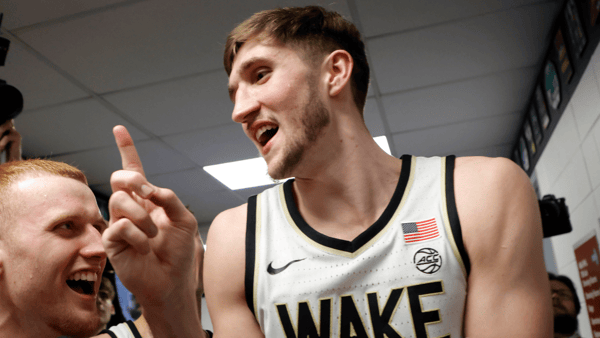
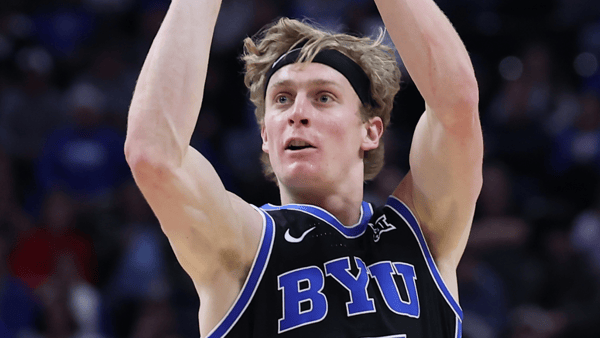
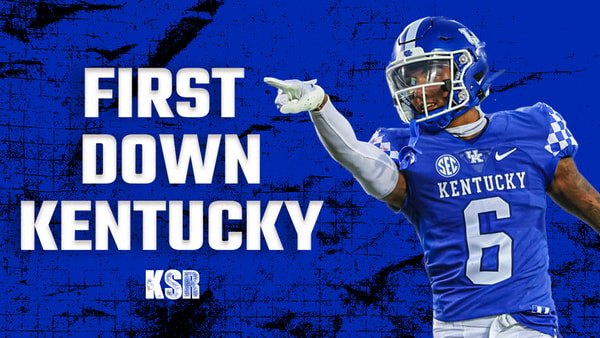
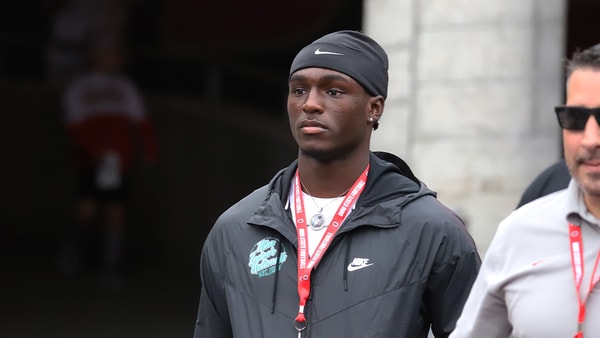
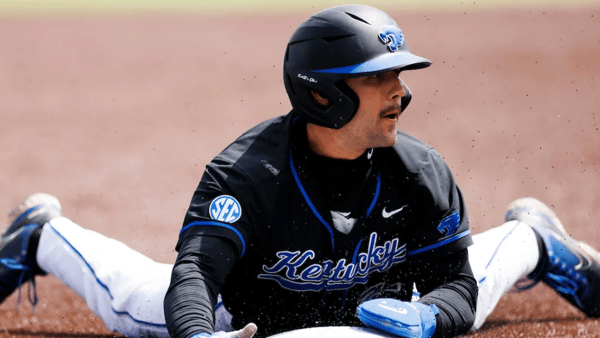
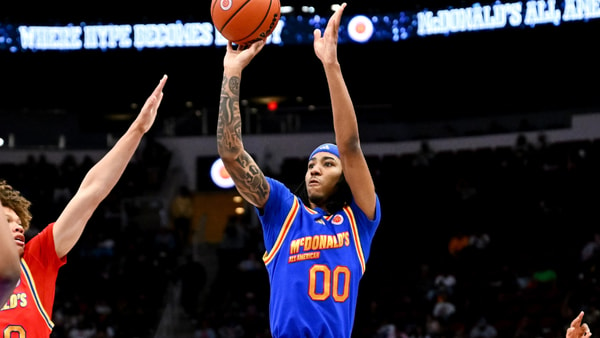
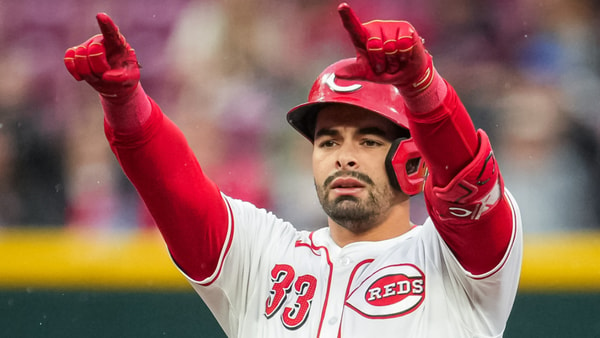
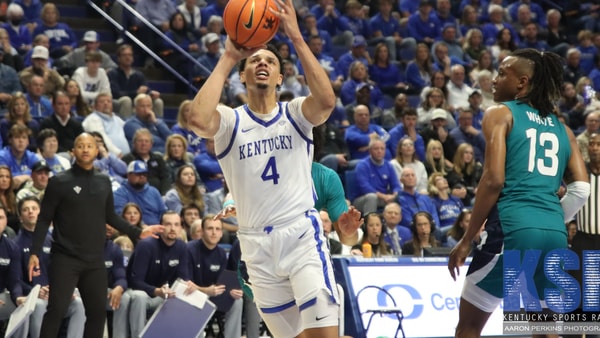
Discuss This Article
Comments have moved.
Join the conversation and talk about this article and all things Kentucky Sports in the new KSR Message Board.
KSBoard